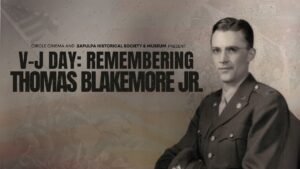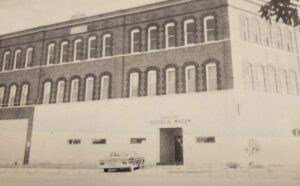Rachel Whitney
Curator, Sapulpa Historical Museum
On January 31, 1947, the trees which were in the center of Main Street from Cleveland to Taft were removed for safety reasons. The trees had been there since 1935 after the removal of the old trolley tracks. Once the trees were removed, the city planned on adding another lane as soon as funds were available.

Like most towns when they were first established, the streets of Sapulpa were first dirt roads. The horse and buggies left waves and ridges of piled up dirt along the streets. In June 1905, street improvements were an ongoing problem for the town. Pedestrians trying to cross the street were faced with either mud or dust. The street department was being bombarded with requests to grade the streets, put in drainage culverts, and install pedestrian crossings with gravel or brick. The city had a contract for the crossings and culverts at Main and Hobson, and on Dewey at every crossing between Main and Walnut. This gave the town a “metropolitan look.”

Luckily, sidewalks came along and helped pedestrians walk from store to store. By September 1905, Street Commissioner Nichols was busy laying curbs on the west side of Main from Hobson to the railroad right-of-way. These curbs were probably made of stone.
Not long after, the roads were being paved by the City. Cities were in charge of their own roads of their district, at the time, and not by the Highway Departments. But first, another transportation system was being built in Sapulpa: the trolley.
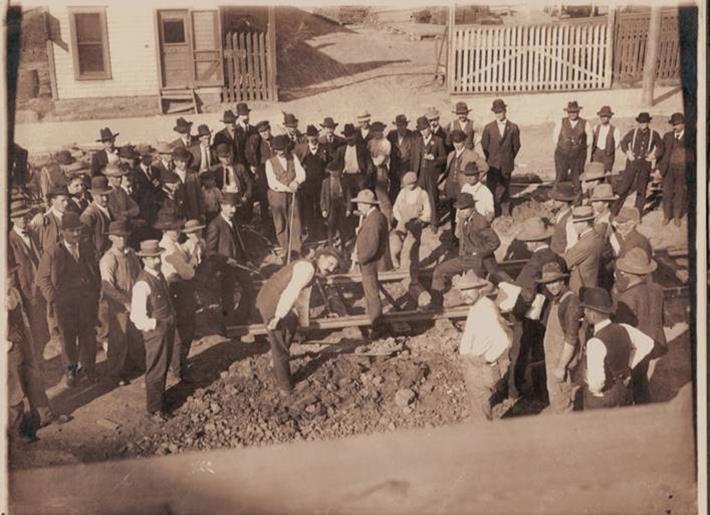
First spike on Dewey, 1908 
Laying tracks on North Main Street, 1908
Trolley service in Sapulpa began in March 1908 as the Sapulpa and Interurban Railway Company. It began with only one trolley car and very few tracks. It started on Dewey at the railroad tracks and went west on Dewey to Main Street and then south one block to Lee Avenue, A year later tracks were laid east on Dewey to Mission Street, then south to Lincoln and then east to Boyd Street.

By 1910, tracks were extended west and south. Tracks were laid down Lee Avenue from Main to Independence, south to Bryan, west to Oklahoma, south to Hastain then east across Main to what is now Kelly Lane Park to the Frisco Railroad tracks and then south paralleling the Frisco tracks to Kiefer. By October 1910 a new extension from Main and Lee went directly south down Main and intersected with the Kelly Lane Park line.
With more transportation needs, however, the trolley system began to waver. As time went on, competition from the automobile had its toll on the trolley systems, not only in Sapulpa but in the state of Oklahoma, too. Route 66 was completed in 1926 and more streets and highways were being built and paved. Ridership began failing and the line to the Schramm Glass Plant and the Welles Packing Plant was discontinued in 1918.
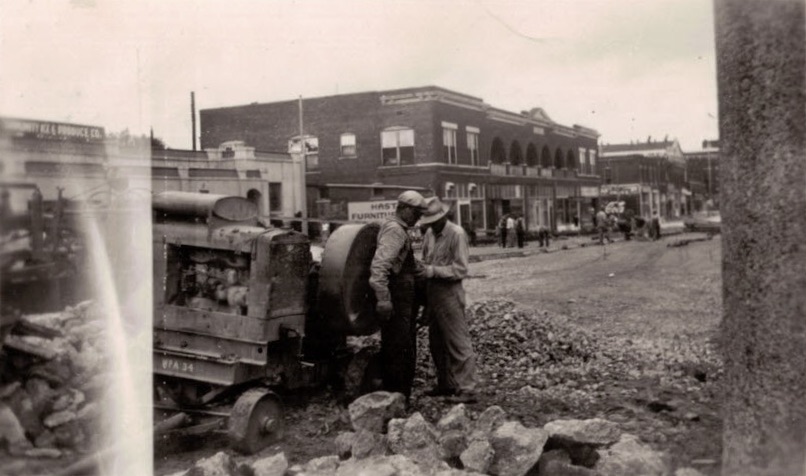
Workers resurfacing Dewey, removing tracks for bricks, circa 1940s 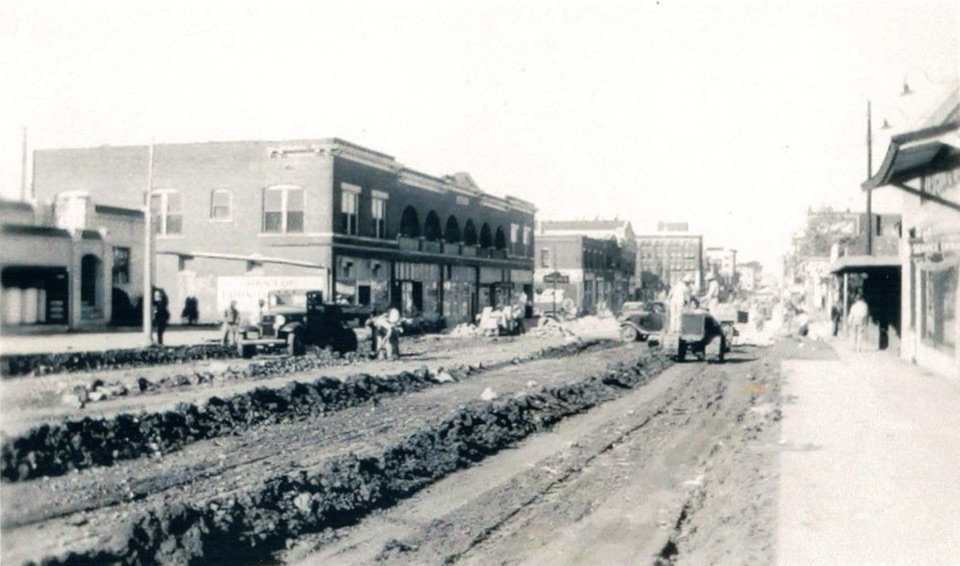
Resurfacing Dewey, removing tracks for bricks, circa 1940s
By 1934, the trolley system changed ownership to become Tulsa-Sapulpa Union Railway. The tracks embedded the streets; the abandoned tracks looked like the makings of a ghost-town. Plans were made for the removal of the tracks, and in their place, bricks were embedded the roads. The Women’s Chamber of Commerce proposed a way to “beautify” Main Street. The Beautification Plans began in early 1935 by reclaiming Main Street as “Memory Lane.”

In August 1935, President of Women’s C.of C. Mrs. O.R. Shaffer stated: “The program to beautify the roadway leading from the highway to the South Heights cemetery is being pushed with an effort to secure trees for this purpose from the government plant-a-tree drive.
“This organization will not stop its campaign of beautification until this stretch of road has been shrubbed planted in perennial flowers and lined with hardy shade trees.”
At first, however, there was an issue with the trees – not for being unsafe, though. “The Women’s Chamber of Commerce was having ‘cow trouble’. They protested loudly to the damage bossie and her chains were doing to the handiwork.

“Their complaint launched against residents of South Heights who were tethering their cows to the trees on Memory Lane, the roadway leading from the paving to the South Heights cemetery, beatified by the Women’s C of C. ‘Trees are being marred, barkings disfigured, and shrubs broken.’”
The Women’s Chamber kept working hard, and pushed a drive for improvement. Telephone campaigns were used for support the funds; “money from this campaign will be used to extend Memory Lane on Cleveland and Main from South Heights cemetery.”

Sadly, just 12 years later, “trees planted by the Women’s Chamber of Commerce located on South Main Street were removed by city employees after they were termed hazardous to highway traffic.”
Future plans for low shrubbery and flowers planted in the area were just wanting for the funding to be obtained. However, another plan to expand the lanes was another way to reuse the now available median.
After the cedar trees were removed, Women’s C of C. President Mrs. S.M. Cunningham stated: “‘I am happy the trees have been removed, and that we are relieved of the obligation of the cedars which were planted in an effort to beautify the city.’”




